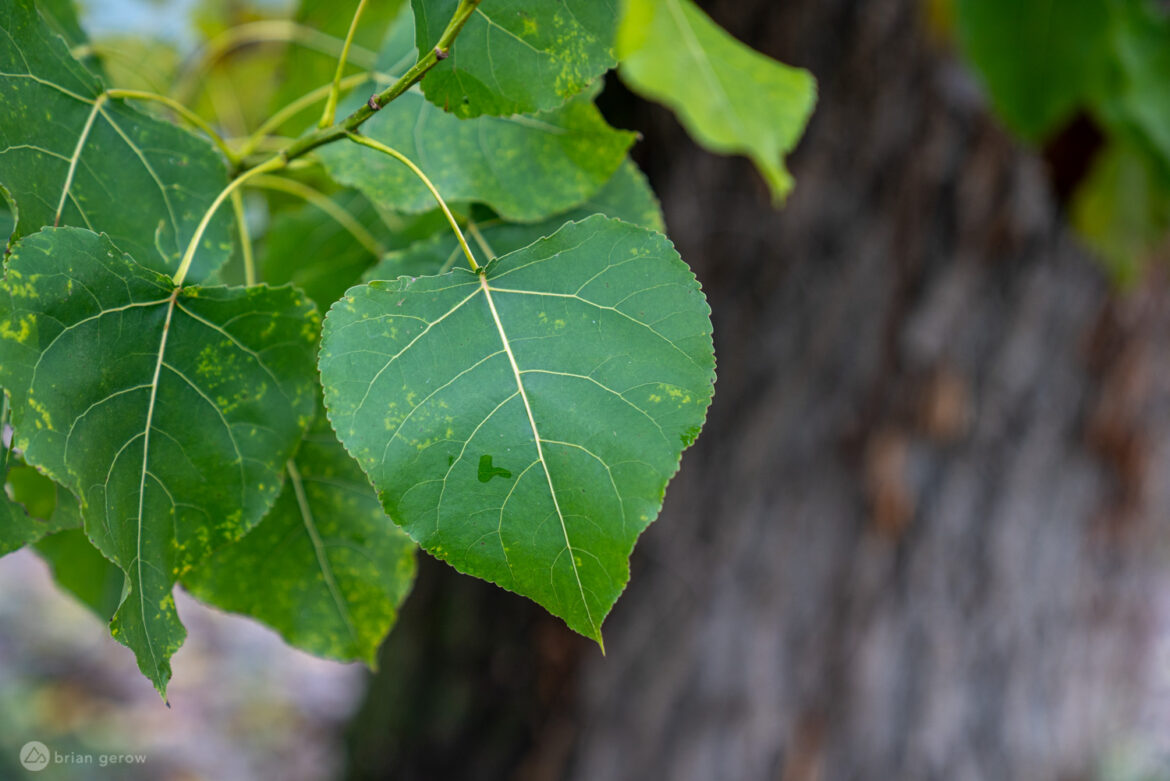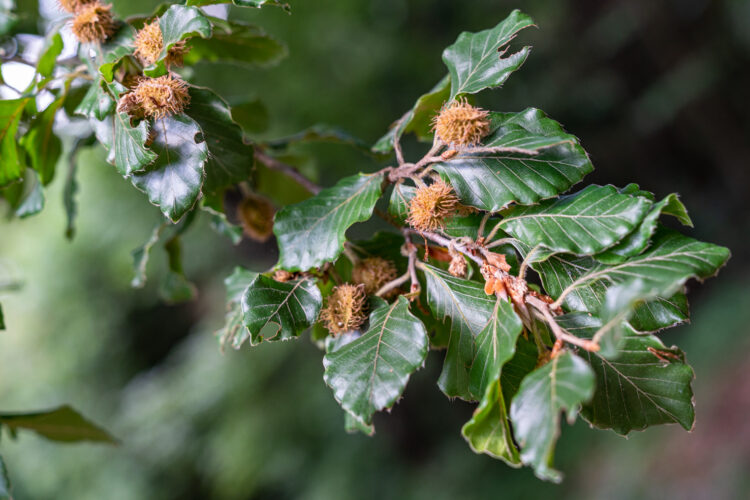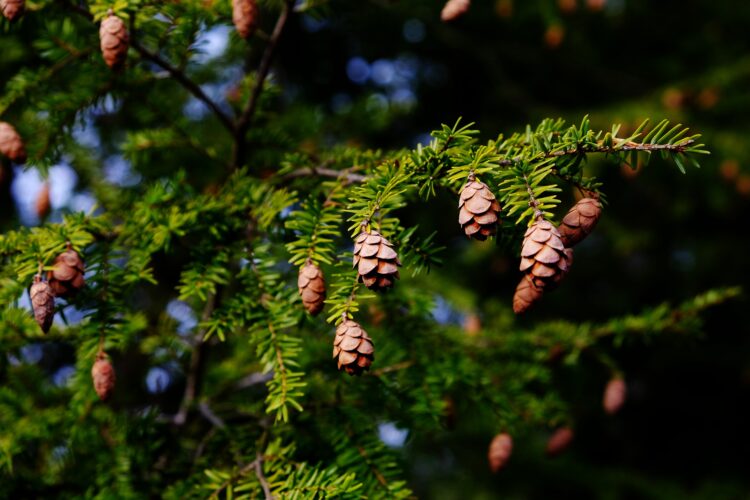
It’s snowing on the trail, yet it’s t-shirt-warm in springtime and the sky shows blue on every horizon; you might just be pedaling past a stand of cottonwood trees. The towering giants, with their head-sized leaves and house-sized shadows, release a cotton-like detritus after pollinating each season, and with enough of the massive trees together the snowy appearance across the ground creates hallucinatory imagery for a warming forest. It’s one of the countless moments when a forest can remind us we’re not alone, but supported by our massive breathing and thriving natural community.
While we’re sitting several months from cotton clouds in Earth’s northern half, it’s a splendid time to see the armature of your nearby giant cottonwood. These massive shade-intolerant trees live in flood plains, growing from almost any soil other than heavy clay. Like willows, their broken branches can take root wherever the stream leaves them. During early snowmelt events, cottonwood can be found fully submerged in raging rivers, only to pop up and bloom with bright green leaves once the water subsides.
Hanging out under the same genus as poplars and aspen trees, the three species of cottonwood trees are native to North America, Europe, and western Asia. In North America, the Eastern Cottonwood (Populus deltoides) is largely found east of the Mississippi and north into Canada, as the name implies, while Black Cottonwood (Populus balsamifera) grows west of the Rockies, and the Freemont Cottonwood (Populus balsamifera) spreads across California, northern Mexico, Arizona, and east into Utah.

The tree’s thirst for direct sunlight, combined with large diamond-shaped leaves causes an open canopy, where the most shaded branches tend to fall off. As one of the fastest-growing tree species, cottonwood trees can gain 10-20 feet of height per year and multiple inches of trunk girth. While most specimens have a short lifespan of 50-70 years due to their rapid growth and soft wood structure, they can occasionally stand as long as 400 years with perfect soil and wind conditions. One-hundred foot tall cottonwood trees with equally wide branch-spans are not uncommon, and the largest recorded tree lives in Hastings, New Zealand, skyscraping at 138ft (42.1m) with a 10.7ft (3.25m) diameter girth.
Identifying cottonwood

In addition to their penchant for moist soils and taller-than-you growth character, cottonwood can be identified by their massive triangle-shaped leaves with coarse serrations all around the edges. Structural elements of the leaves alternate from side to side, including where they branch from the main stem and how their veins are configured. The leaves display a similar shade of green on their top and bottom, while the leaves of older trees can take on a slight orange hue. Black cottonwood leaves can also grow in ovate shapes, though the rest of the tree will look like a typical cottonwood.
Cottonwood trees are a hardwood by seed classification alone, and their thick furrowed bark is popular among wood carving artists. The angular brownish-grey bark grows like a coat of armor, making the trees relatively fire tolerant. Where there are cottonwoods in the wild you’ll inevitably find saplings and suckers, and the bark on young trees is smooth, with a yellow and green mix of colors.
Cottonwood trees flower in the form of catkins, with either one or four buds in a cluster depending on the plant’s sex. The requisite cotton-like substance that carries seeds adrift comes from the female trees. The lightweight wisps of seed material can be carried as far as five kilometers from their tree of origin.
The video below of a cottonwood seed bloom in Chicago offers a good visual of what the tree’s snow looks like.
Human and other animal uses
If you were reading this article in a tactile magazine, the paper portion of each page might be made of cottonwood fiber. The tree’s rapid growth rate and softer fibers make it an ideal candidate for paper and cardboard production, though it’s also used for some internal furniture components, pallets, and shipping crates.
As stated, another really cool use of the wood is for carving artwork. There are entire YouTube channels dedicated to the craft for folks who want to learn how, and countless places to purchase hunks of cottonwood trunk or bark for those emergent creations.

In the world of herbal medicine, cottonwood-based remedies are used to cure aches and pains, as an antimicrobial to preserve things, to heal infections, and the plant has reported benefits for respiration and digestion. Most medicinal products are created from the buds of mature trees.
Indigenous people across Canada, Mexico, and the US used cottonwood trees to create a variety of medicines, tools, art, musical instruments, and in parts of religious and cultural ceremonies. Some tribes in northern Mexico reportedly used boughs from the tree in funeral rituals. While historical records state that a lot of dugout canoes were made of solid red cedar, cottonwood and Sitka spruce were also used in regions where those trees are abundant. Those early water vessels differed not only by their tree material, but there was a wide variety of shapes and technologies depending on their use case.
Is there a trailside treasure you would like to see highlighted here? Please let us know in the comments.





















0 Comments